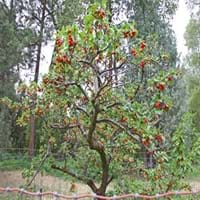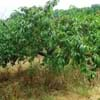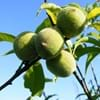Life Span
Perennial
Annual and Perennial
Type
Fruit
Bulb or Corm or Tuber
Origin
Hybrid origin
Central America, South America
Types
Fruit
Vine, Flowering plant
Habitat
Temperate Regions
All sorts of environments, Along Railroads, Banks, Moist Ditches, Roadsides, rocky banks of streams
USDA Hardiness Zone
4-8
10-13
Sunset Zone
A2, A3, 1a, 1b, 2a, 2b, 3a, 3b, 4, 5, 6, 7, 8, 9, 14, 15, 16, 17
21,22
Habit
Oval or Rounded
Vining/Climbing
Minimum Width
Not Available
Flower Color
White
Purple, Rose
Flower Color Modifier
Bicolor
Bicolor
Fruit Color
Red, Dark Red
Not Available
Leaf Color in Spring
Dark Green
Purple, Dark Green, Black
Leaf Color in Summer
Dark Green
Light Green
Leaf Color in Fall
Dark Green
Several shades of Green
Leaf Color in Winter
Light Green
Light Green
Leaf Shape
Simple lobed or unlobed
Acicular
Plant Season
Spring, Summer
Spring, Summer, Fall, Winter
Sunlight
Full Sun, Partial Sun
Full Sun, Partial Sun
Growth Rate
Medium
Very Fast
Type of Soil
Loam
Clay, Loam, Sand
The pH of Soil
Acidic, Neutral
Acidic, Neutral, Alkaline
Soil Drainage
Well drained
Well drained
Bloom Time
Early Spring, Spring
Late Spring, Early Summer, Summer, Late Summer, Early Fall, Fall, Late Fall
Tolerances
Drought
Drought
Where to Plant?
Ground
Container, Ground
How to Plant?
Semi-hardwood and hardwood cuttings
Cuttings, Leaf Cutting, Tuber propagation
Plant Maintenance
Medium
Medium
Watering Requirements
Keep ground moist, Use Mulches to help prevent water loss during hot and windy weather
Keep the Soil well drained, Needs very little water
In Summer
Lots of watering
Lots of watering
In Spring
Moderate
Moderate
In Winter
Average Water
Average Water
Soil pH
Acidic, Neutral
Acidic, Neutral, Alkaline
Soil Type
Loam
Clay, Loam, Sand
Soil Drainage Capacity
Well drained
Well drained
Sun Exposure
Full Sun, Partial Sun
Full Sun, Partial Sun
Pruning
Remove damaged leaves, Remove dead branches, Remove dead leaves
Remove damaged leaves, Remove dead branches, Remove dead leaves
Fertilizers
All-Purpose Liquid Fertilizer
All-Purpose Liquid Fertilizer
Pests and Diseases
Birds
Red blotch
Plant Tolerance
Drought
Drought
Flower Petal Number
Single, Double
Single
Foliage Texture
Medium
Coarse
Foliage Sheen
Glossy
Matte
Attracts
Birds
Aphids, Beetles, Cutworms, Insects, Mites, Whiteflies
Allergy
Anaphylaxis, gastro-intestinal problems, Itchiness, Skin irritation
Abdominal pain, allergic reaction, Nausea, Skin rash, Twitching of face
Aesthetic Uses
Beautification, Bouquets, Informal Hedge, Landscape Designing, Showy Purposes, Wild gardens
Not Used For Aesthetic Purpose
Beauty Benefits
Not Available
Not Available
Environmental Uses
Air purification
Air purification
Medicinal Uses
anti-inflammatory, Anti-oxidant, Gout, Insomnia, Soothing and relieving pain
Cures constipation, Fiber, Low calories, lowering blood pressure, Potassium, ß-carotene, Vitamin A, Vitamin C
Part of Plant Used
Flowers, Fruits
Leaves, Root, Shoots, Stem, Tuber
Other Uses
Air freshner, Beneficial species for attracting pollinators, Cake, Edible syrup, Oil is used in perfume, soaps, creams, etc., Used to make juice
Starch, Used As Food, Used as Ornamental plant
Used As Indoor Plant
No
Sometimes
Used As Outdoor Plant
Yes
Yes
Garden Design
Edible, Fruit / Fruit Tree, Mixed Border
Container, Edible, Groundcover, Hanging Basket, Herb / Vegetable, Mixed Border, Rock Garden / Wall, Vine
Botanical Name
PRUNUS cerasus
IPOMOEA batatas 'Blackie'
Common Name
Pie Cherry, Sour Cherry, Tart Cherry
Blackie Sweet Potato Vine, Sweet Potato Vine
In Hindi
Sour cherry
शकरकन्द
In German
Sauerkirsche
Süßkartoffel
In French
Prunus cerasus
Patate douce
In Spanish
Prunus cerasus
Ipomoea batatas
In Greek
Sour cherry
Sweet potato
In Portuguese
Ginja
Batata-doce
In Polish
Wiśnia pospolita
Wilec ziemniaczany
In Latin
Prunus cerasus
Ipomoea batatas
Phylum
Tracheophyta
Tracheophyta
Class
Magnoliopsida
Magnoliopsida
Family
Rosaceae
Convolvulaceae
Clade
Angiosperms, Eudicots, Rosids
Angiosperms, Asterids, Eudicots
Tribe
Not Available
Not Available
Subfamily
Not Available
Not Available
Number of Species
Not Available
Importance of Sour Cherry and Sweet Potato Vine
Want to have the most appropriate plant for your garden? You might want to know the importance of Sour Cherry and Sweet Potato Vine. Basically, these two plants vary in many aspects. Compare Sour Cherry and Sweet Potato Vine as they differ in many characteristics such as their life, care, benefits, facts, etc. Every gardener must at least have the slightest clue about the plants he wants to plant in his garden. Compare their benefits, which differ in many ways like facts and uses. The medicinal use of Sour Cherry is anti-inflammatory, Anti-oxidant, Gout, Insomnia and Soothing and relieving pain whereas of Sweet Potato Vine is Cures constipation, Fiber, Low calories, lowering blood pressure, Potassium, ß-carotene, Vitamin A and Vitamin C. Sour Cherry has beauty benefits as follows: Not Available while Sweet Potato Vine has beauty benefits as follows: Not Available.
Compare Facts of Sour Cherry vs Sweet Potato Vine
How to choose the best garden plant for your garden depending upon its facts? Here garden plant comparison will help you to solve this query. Compare the facts of Sour Cherry vs Sweet Potato Vine and know which one to choose. As garden plants have benefits and other uses, allergy is also a major drawback of plants for some people. Allergic reactions of Sour Cherry are Anaphylaxis, gastro-intestinal problems, Itchiness and Skin irritation whereas of Sweet Potato Vine have Abdominal pain, allergic reaction, Nausea, Skin rash and Twitching of face respectively. Having a fruit bearing plant in your garden can be a plus point of your garden. Sour Cherry has showy fruits and Sweet Potato Vine has no showy fruits. Also Sour Cherry is not flowering and Sweet Potato Vine is not flowering . You can compare Sour Cherry and Sweet Potato Vine facts and facts of other plants too.





